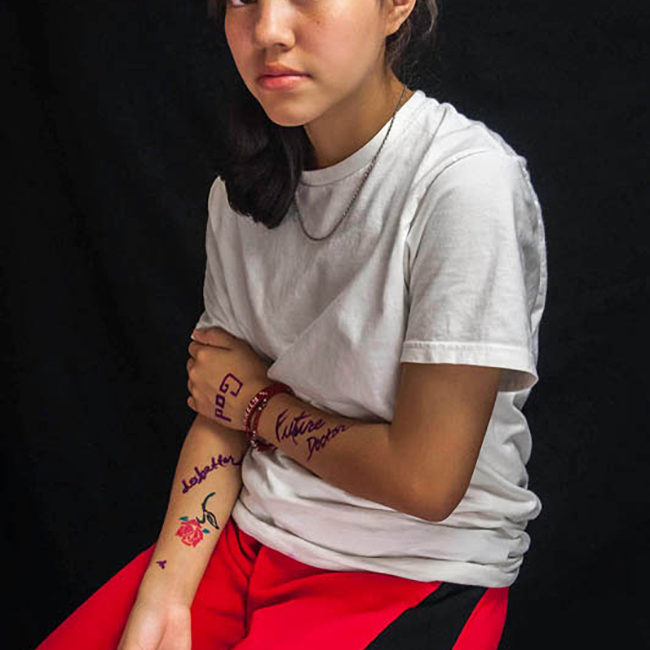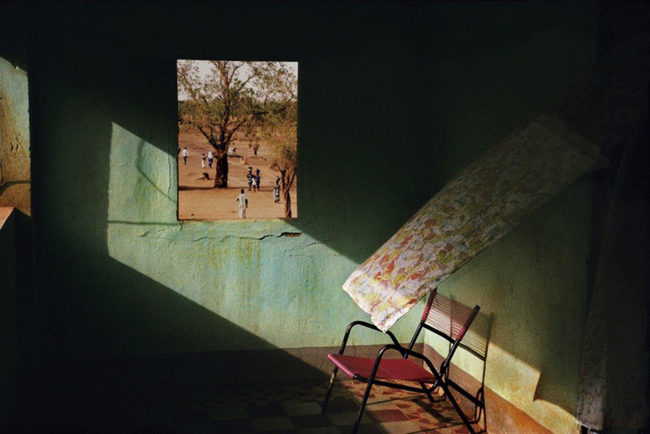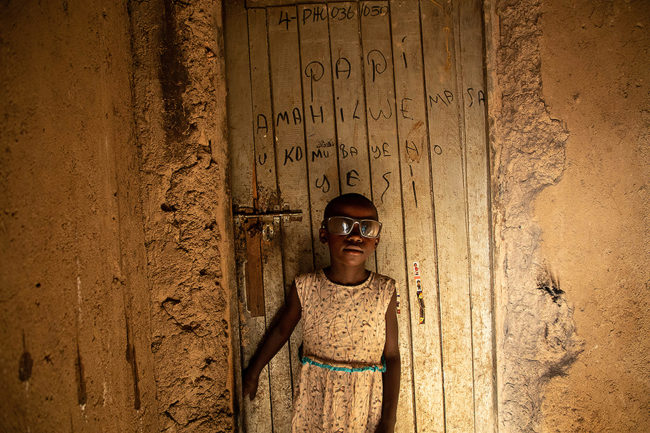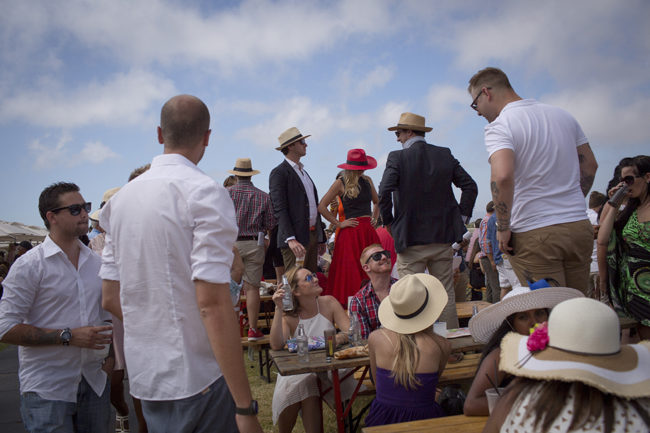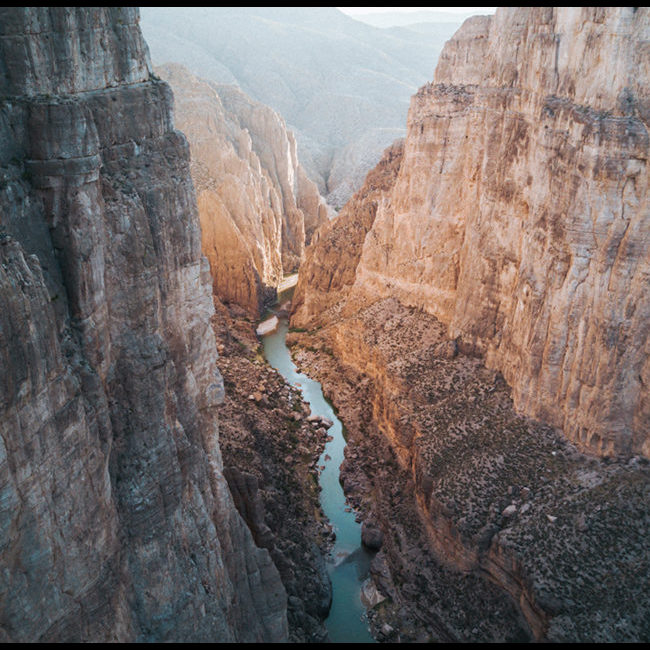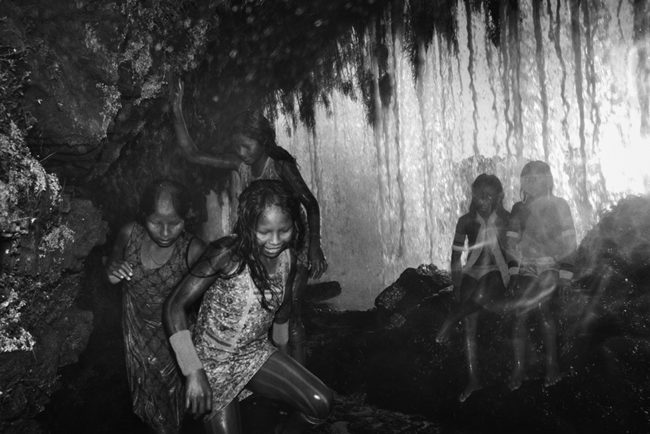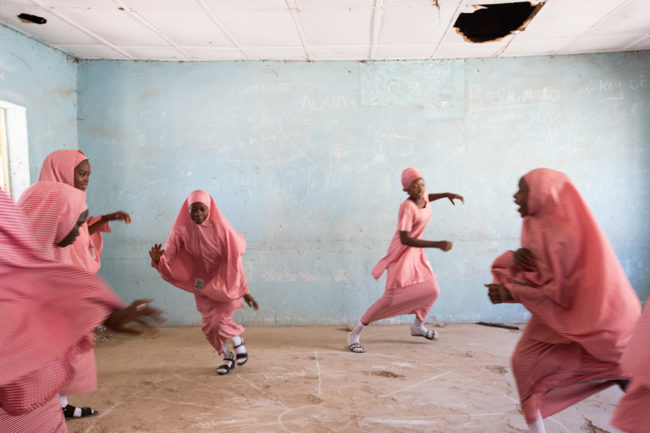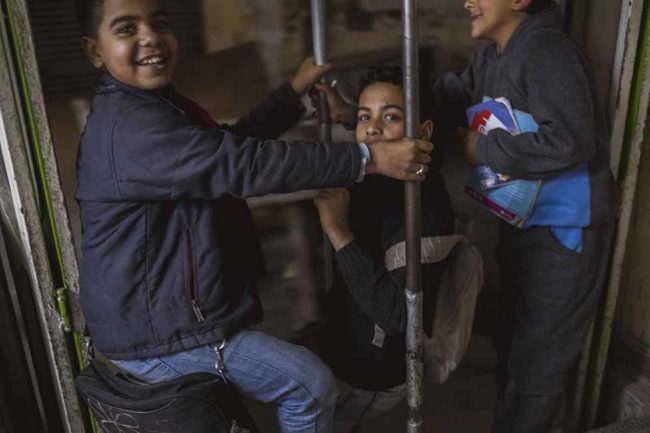Felicia Perretti is a food photographer who shoots for restaurants, magazines, cookbooks and commercial clients. In the past year, she has been photographing farms and farmers, “to take my understanding of food full circle,” she tells PDN by email. She has documented life on a dairy farm and followed farmers raising sheep, goats, cattle and pigs. Recently, she photographed one of the less picturesque aspects of farm life—killing and processing free-range chickens. Her series was shot inside a mobile meat processing unit at a farm where she had been photographing for the past year. The series recently won the International Association of Culinary Professionals’ Culinary Trust Award for Food Photography That Makes a Difference. As she writes in a blog post about the shoot, “One thing that photographers can relate to is having access to situations and events in everyday life that not everyone sees. We have an opportunity to tell stories from our perspective and share with an audience.”
In the post, Perretti describes the steps she witnessed. After sterilizing everything, the operator “organized the inside of the trailer,…getting the water running in his sinks to a boiling temperature.” After putting on his rubber apron and gloves and laying out his knives, he pulls chickens from a waiting crate and puts them head-first into a row of upside down cones. Then he cuts off their heads. “The heart would still be pumping which allowed the chicken to bleed out more efficiently. The blood would drain into a large metal bay which was under the row of cones,” she writes. The chickens go into a soapy hot water bath “to help with cleaning and loosening the feathers,” and then into a tub lined with rubber prongs. “When that was turned on it would spin the chickens quickly and remove all the feathers completely from the body.” Oil glands, feet and esophagus were removed from the plucked birds, and they were cooled and refrigerated.
Perretti tells PDN about what attracted her to the subject and how she approached photographing it in an edited email interview. [Please note—some images are graphic]
PDN: What attracted you to shooting something that a lot of people might find gross?
Felicia Perretti: That was the one of the first decisions to shoot this, because a lot of other people wouldn’t. I was curious if anyone else has attempted documenting this and looked online and couldn’t find much, so it became a perfect opportunity to fill that void. From a broader sense there were other factors in deciding to document this, going back a year to when I started documenting farms and farmers… The chicken processing was just part of the process and made sense to me to include in my farming photography. Farming is a laborious job that is quite rewarding and something we don’t really take the time to watch. The food we eat comes from somewhere and it’s not just your fruits and vegetables but your meats and fish too.
PDN: What it was like photographing in what looks light a small, dark intense place—what were the technical challenges and how did you solve them?
FP: Coming from a studio background just being in the environment was challenging and being present watching him work. I had to anticipate what was going to come next. It did help that there were several chickens that needed to be cleaned and killed so the process kept repeating itself while I was there. He had a system and just went down the line and I watched. The actual space was small because it was a trailer hitched to a truck fitted with all his tables and machinery. I could only really stand at the front or the back of the trailer to get shots and not be in his way. It was messy because there was some blood spilling. Also the combination of boiling water and steam in the air was a hurdle to work around and work with in my shots. Surprisingly there wasn’t much of a fowl smell, but one thing I’ll remember is the sound the chickens made when they were first removed from the crates and put head first into the cones. Since I’ve worked on location at the farms I’ve gotten better at shooting hand held, following the action, and finding the light. By the time the chicken processing day came up I was comfortable technically in what I was capturing. That gave me the creative freedom to just shoot and watch what he was doing.
Related Stories:
Good Taste in Pictures
Meat Cute
Miriam Romais Documents a Woman’s Transition from Corporate Life to Self-Sufficient Farmer
